|
November Article
|
Cold Winters? A Native Seed's Dream!
Oh no! Are we in for yet another brutal Minnesota winter? If this keeps up, whether we are mentally prepared or not, our restoration areas will soon be blanketed by a hefty layer of snow followed by bone-chilling below zero temperatures.
As we make our way through winter, native prairie and wetland seed are being exposed to extreme cold, wind, varying moisture levels, filtered sunlight, and numerous freeze and thaw events. Collectively, these physical factors in winter play a key role in seed dispersal and germination.
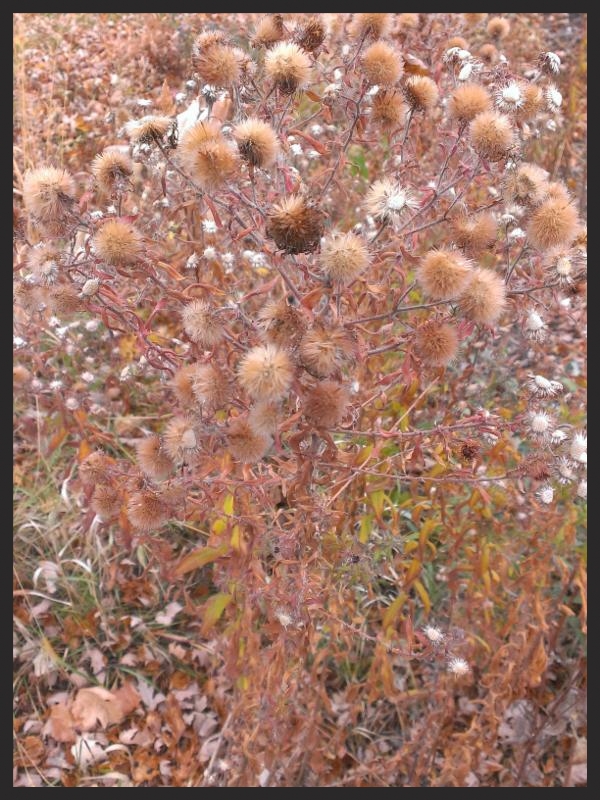 |
|
Fluffy New England Aster seed.
|
Native plants have a diverse array of seed types - big, small, fluffy, light, heavy, prickly and smooth. Their physical attributes play into how they are dispersed and how winter may aid in their germination. For example, many of our aster species flower late in the growing season. The light seed remains on the robust flower stalks into early winter. Nasty snow storms with heavy winds can carry the light aster seed for some distance.
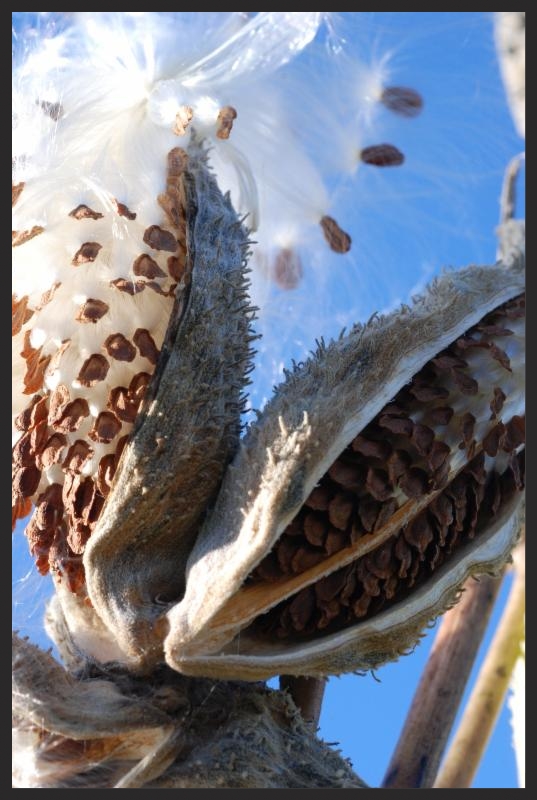 |
| Milkweed seeds being dispersed by the wind. |
Another means by which native seed moves around in the
winter is through wildlife. Imagine a furry critter hunkering down in a
shoreline buffer area to take refuge from the latest winter blast. It rubs up against a host of species with seed that are a bit course and prickly. There is a good chance that some of that seed will hitch a ride on that animal's winter coat.
In a sense, many Minnesota native plant species depend on winter to treat their seed. This cold period is needed to break seed dormancy. The process of artificially treating seed with a cold and moist environment is commonly called "cold stratification." Winter's freeze and thaw cycles also help weaken hard seed shells which improve seed germination rates. This is called scarification.
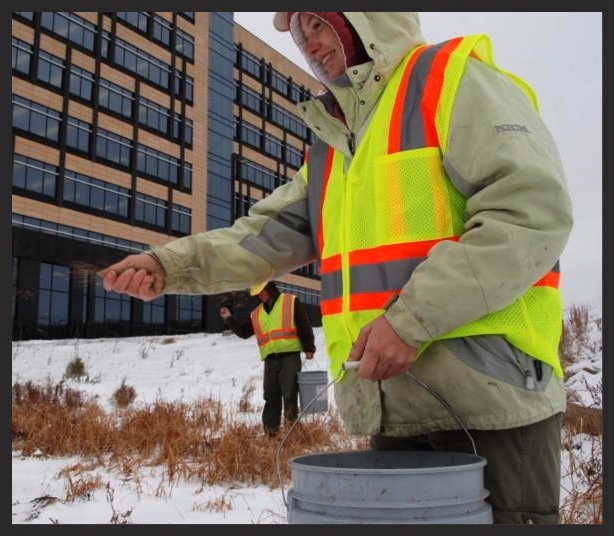 |
| Spreading seed on the snow! |
If you are thinking about increasing the coverage of certain species in your natural buffer, now is a great time to sow seed. It is just fine to disperse the seed on the frozen ground or even on a layer of snow. The seed will eventually find its way down to the soil. The freezing and thawing will work the seed into the top soil layer. If you don't have time, well that is ok too. The wind will do some of the work for you, and the birds will surely enjoy the tasty seed.
|
|
Native Plant of the Month
|
Boneset
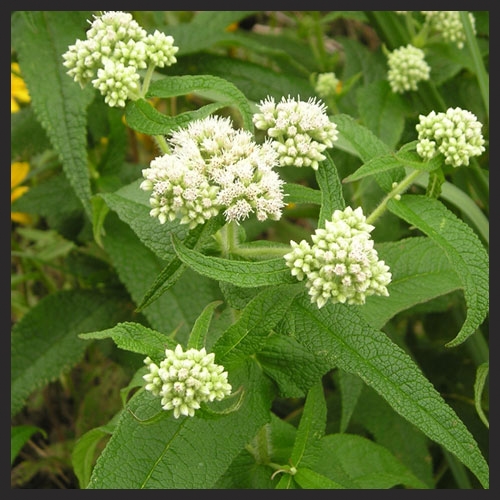
Eupatorium perfoliatum
Moisture: Wet
Exposure: Full or Partial Sun
Bloom: July-October
Color: White
Height: 2-4 ft.
Boneset is a coarse, hairy plant that has stems with long white hairs. The leaves are hairy underneath and slightly hairy above. The leaves are opposite and fused to the stem. Flowers are white with no ray florets and only disk florets. Boneset grows well in constant moisture in full sun or part sun. It is found in swamps, meadows, embankments, and wet prairies. This is a great plant for shoreland restorations! Used in herbal medicines, it is also deer resistant and a nectar source for butterflies, bees, and wasps. Another common name is Indian sage.
|
|
Invasive Plant of the Month
|
Common Buckthorn
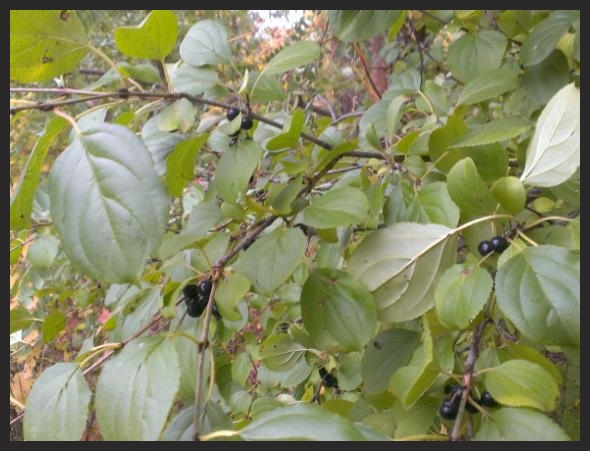 |
|
Common Buckthorn leaves and fruit.
|
Rhamnus Cathartica
Exposure: Sun, Shade,
Partial Shade
Moisture: Moist to Dry
Height: Up to 20 Feet
Blooms: June-July
This shrubby tree was brought over from Europe as an ornamental shrub where it escaped and has become extremely costly to manage. It forms dense stands that out compete native plants and trees, dramatically changing the understory of woodlands.
Buckthorn has greenish fruit that turn black in the fall which are eaten by birds and distributed across the landscape.
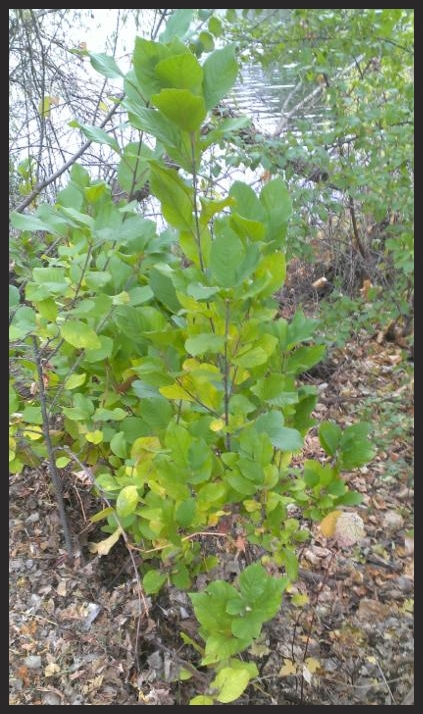 |
|
Glossy or European Buckthorn
|
Leaves are dark green, oval shaped, have 3-5 pairs of veins, and have fine teeth along the leaf edge. Bark is dark brown. Stems have thorns and terminal buds that look like a deer hoof; giving it the common name "Buckthorn".
Another species of buckthorn that is also invasive is called Glossy Buckthorn (Frangula alnus). The bark is dark brown with prominent lenticels, or vertical light colored marks on the bark. Oval leaves are glossy, dark green, alternate, toothless, and have 8-9 pairs of veins. Glossy Buckthorn can easily be confused with native cherry trees.
Both Common and Glossy
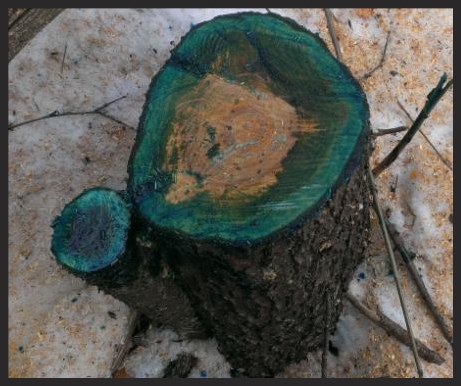 |
|
A buckthorn stump treated with herbicide.
|
Buckthorn are on the Minnesota Department of Agriculture's Restricted Noxious Weed List. This means it is illegal to buy, sell, or transport Buckthorn in Minnesota and efforts should be done to manage it where possible.
Management strategies include cutting and treating the stump with a herbicide, foliar spraying the leaves with a herbicide, or pulling the buckthorn out with a weed wrench (which can disturb soil and create future weed and erosion issues).
Now is a great time to remove buckthorn as it is easily distinguishable from other native trees by keeping its leaves green and on the branch long into the fall and early winter. Need help identifying or removing a stand of Buckthorn on your property? Call our Maintenance Coordinator Tracy at 6121-220-4178 or email at [email protected]
|
 |
| Photo by Heather Holm |
Mining Bee
Andrena hirticincta
Range: Midwest and New England States
Habitat: Open areas like fields, meadows, and gardens.
Identification: The size of this bee is about 8-13mm. Their yellow hair has a greenish tinge. It lives in cavities it digs in the ground.
Pollination: This species of mining bee is a pollen specialist; meaning it only collects and relies on pollen from certain plant families. This bee is an aster and goldenrod specialist so it visits species like Large-Leaf Aster, Heath Aster, Zig-Zag Goldenrod, Stiff Goldenrod, and other species in the Aster and Solidago families. This species of bee is commonly seen in the fall when these plants are flowering.
Want to learn more about Native Plants and Pollinators? Purchase local author Heather Holm's book Pollinators of Native Plants on Amazon!
|
|
|
Our Retail Nursery is closed for the season. Check our website for next year's retail dates and other updates.
Click and visit our website for current
|
Come see us at the Minnesota Association of Soil and Water Conservation Districts Convention and Trade Show! December 8th and 9th at the DoubleTree Hotel in Bloomington. 8am-5pm
|
|
|